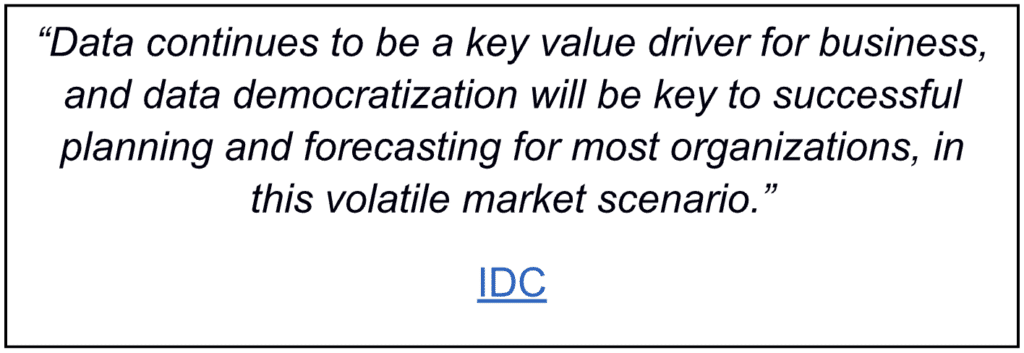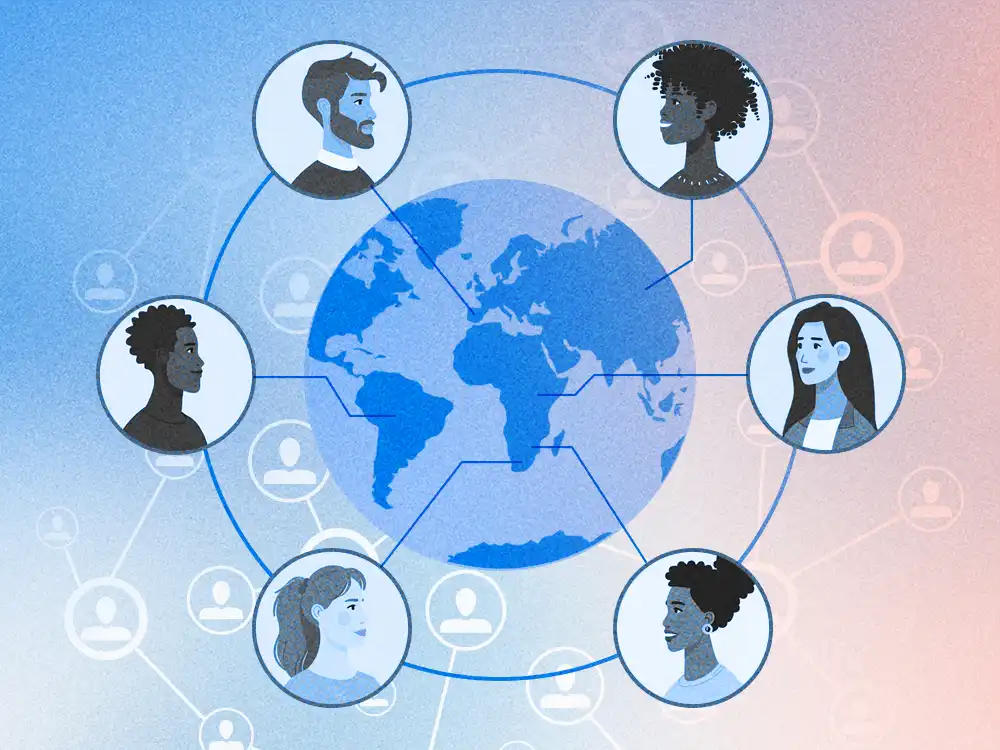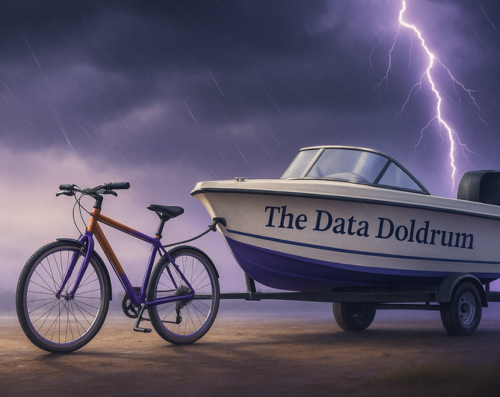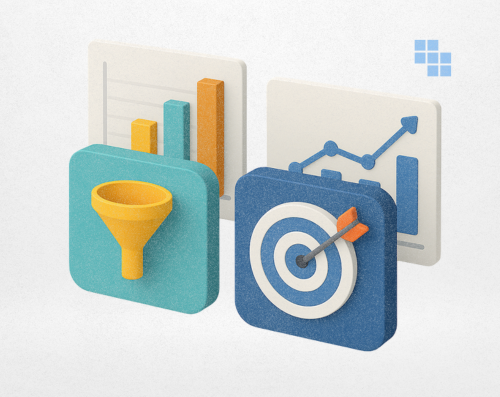What is a data democracy? It sounds like data where everyone gets a vote…and that’s a basic summary. But it’s about more than data: data democratization encompasses the people, processes, and tools that are involved in making data accessible to the right people at the right time, in a way that doesn’t require specialized skills and that promotes valuable decision-making for the business.
This blog explains why businesses today are embracing data democratization, how to implement it, use cases, and leading tools.
What is data democratization?
Data democratization is all about making data within an organization accessible for consumption. This means that it must be in a form that the business, and any non-technical employee, can gain value from it. Just as a person could have a lot of money in the bank but not know how to create wealth from it; a business could be sitting on a massive amount of data but not know how to gain knowledge and insight from it. Data democratization unlocks the door to maximizing the value that can be gained from an organization’s data.
Data democratization is not a “one and done” project. It’s an ongoing process of making data accessible and available to a wide range of users within an organization. The main goal of data democratization is to provide those users with self-service tools to analyze the data and drive business outcomes with it.

Why you should democratize data at your organization
Data silos have been indicated as the number one roadblock for businesses to extract value from business data. When each department of an organization is storing their information in different platforms and systems, with each accessible only by a particular team or department, it creates data silos. These silos in turn create barriers to information sharing and collaboration across departments, as well as impact data accuracy, efficiency, which erodes trust across an organization..
In contrast, data democratization makes data everyone’s business. Offering centralized, standardized data that is all stored in one place makes it more easily accessible to anyone who needs it. It’s a modern approach to creating a more data-driven culture by treating every worker at your organization as a data worker who needs access to the right information in the right way at the right time to do the job that you have hired them to do.
Here are a few reasons why you should democratize your data:
To expand your pool of data experts. The legacy approach to data access within organizations involved designating certain people in the organization as “data keepers.” These people had specialized knowledge of how to access and analyze data, but they spent much of their time answering questions from various teams. Whereas, with a democratized approach to data, the data specialists in an organization become data stewards and data custodians. Instead of spending the majority of their time fielding and answering questions, they are focused on creating flexible data models that are optimized for analysis and available for teams to self-serve answers to their own questions. This enables employees to rapidly iterate and build dashboards without distracting the data scientists, and the data scientists to focus on more complex projects.
To eliminate data silos. With greater access to data, high impact questions and hypotheses about what is happening to the business right now, vs BI reporting of what happened, can be answered via self-service querying and visualizations. This means faster response times, leading to more informed decision making. It also enables the creation of a universal lexicon throughout the organization, where everyone is talking in the same terms, such as KPIs, OKRs, or other specific individual data points. It normalizes and socializes these conversations to make the entire organization more data-focused. If you want your people to be more empowered to solve problems, and use data to solve them or strategize improvements, then data democratization is essential.
To get a greater return from your biggest asset. For most organizations these days, data is one of the most valuable assets they have. Many organizations generate huge amounts of data, but not everyone can use it effectively and work with it very well. Data democratization improves this. Employees and leaders gain trust that the data is accurate, understand how to access it, and learn how to apply it to business problems. Data democratization can serve as a company’s gateway to strategic decision-making at every level.
How to implement data democratization – 3 steps
1. Broaden data access
- Identify which data employees need access to in order to do their jobs well, and whether or not they have access to it.
- Use this discovery process to reveal bottlenecks that may need to be removed and existing data silos that should be exposed.
- Address data silos by setting up ways for employees to see the data and request access to it.
2. Deliver data-driven insights through self-service
- Implement tools that deliver self-service insights and enable non-technical employees to create their own reports, such as data catalogs with self-service analytics tools.
- Expand further by making it possible for employees to access existing analytical dashboards within the organization and also create their own.
- Free data specialists to spend less time on non-strategic tasks such as creating dashboards and more time on complex projects.
3. Increase data literacy and trust
Make data security a high priority. Data democratization requires deliberate and constant attention to data governance and data integrity, calling for a more comprehensive data security strategy.
As access to data increases, identify the roles or categories of employees that need to be comfortable working with and interpreting the data.
Empower employees with understanding of the context of the data and how to use it for strategic decision making, as well as training to use self-service tools that deliver insights.
Data democratization examples
Making data easily accessible to everyone in the organization who can benefit from it, without specialized training, can help businesses achieve numerous outcomes:
- Improved speed and accuracy of decision-making
- Better customer experience
- Increased innovation
- Higher employee retention
Many departments across an organization can benefit from data democratization. Here are a few examples.
Examples of how businesses benefit from data democratization
| Department | Use of data democratization |
| Sales | Use data to assess the value of opportunities in the pipeline; identify prospects that are likely to convert based on actions taken during top of funnel activities. |
| Marketing | Use data to test the success of different campaigns, or different variants of the same campaign, to create better-converting content and campaigns |
| Growth | Use data to run experiments and deliver personalized experiences |
| Product & engineering | Use data to discover which features are in highest demand and deliver accordingly; sunset features that are not in demand |
| Customer success | Use data about customer activities and behavior inside a product to offer more customized service |
| Human resources | Use data to analyze resumes, find potential candidates, and communicate most effectively |
| Executive leadership | Use data to determine which strategic initiatives are delivering the greatest ROI and where future investments should be made |
Tools for data democratization
A modern data stack includes numerous tools to meet all the needs of the organization. For businesses that capture a lot of data, common tools for data democratization include:
Data warehouse: A central repository of information that aggregates data from different sources that can be analyzed to make more informed decisions. Includes Snowflake, Databricks, Google BigQuery, Amazon Redshift, Azure, Clickhouse, and Presto.
Self-service product analytics: Product analytics helps businesses selling digital products to optimize their products with valuable customer insights. Warehouse-native product analytics platforms enable enterprises to gain this insight without moving their data into silos, enabling all teams within the organization (data, analytics, products, etc.) to self-serve answers to their own questions without sacrificing security or compliance.
Business intelligence: Software applications that collect, process, transform, analyze, and report on data from internal and external systems to create useful information for business purposes. These applications typically read data that has been previously stored in a data warehouse or data mart. Includes Microsoft Power BI, SAP Business Objects, Tableau, QlikSense, and Looker.
Not sure if you need business intelligence AND product analytics? Use this checklist to find out.
Kubit and data democratization
Kubit is all about self-service when it comes to product analytics. For businesses looking to democratize data, Kubit works hand-in-hand with your existing data model and data warehouse. We support your “single source of truth” for product and customer behavior analytics. Our warehouse-native platform helps our customers in CPG, eCommerce, media and entertainment, financial services, and healthcare process billions of events every day, revealing valuable customer insights without ever requiring companies to move their data into silos.




